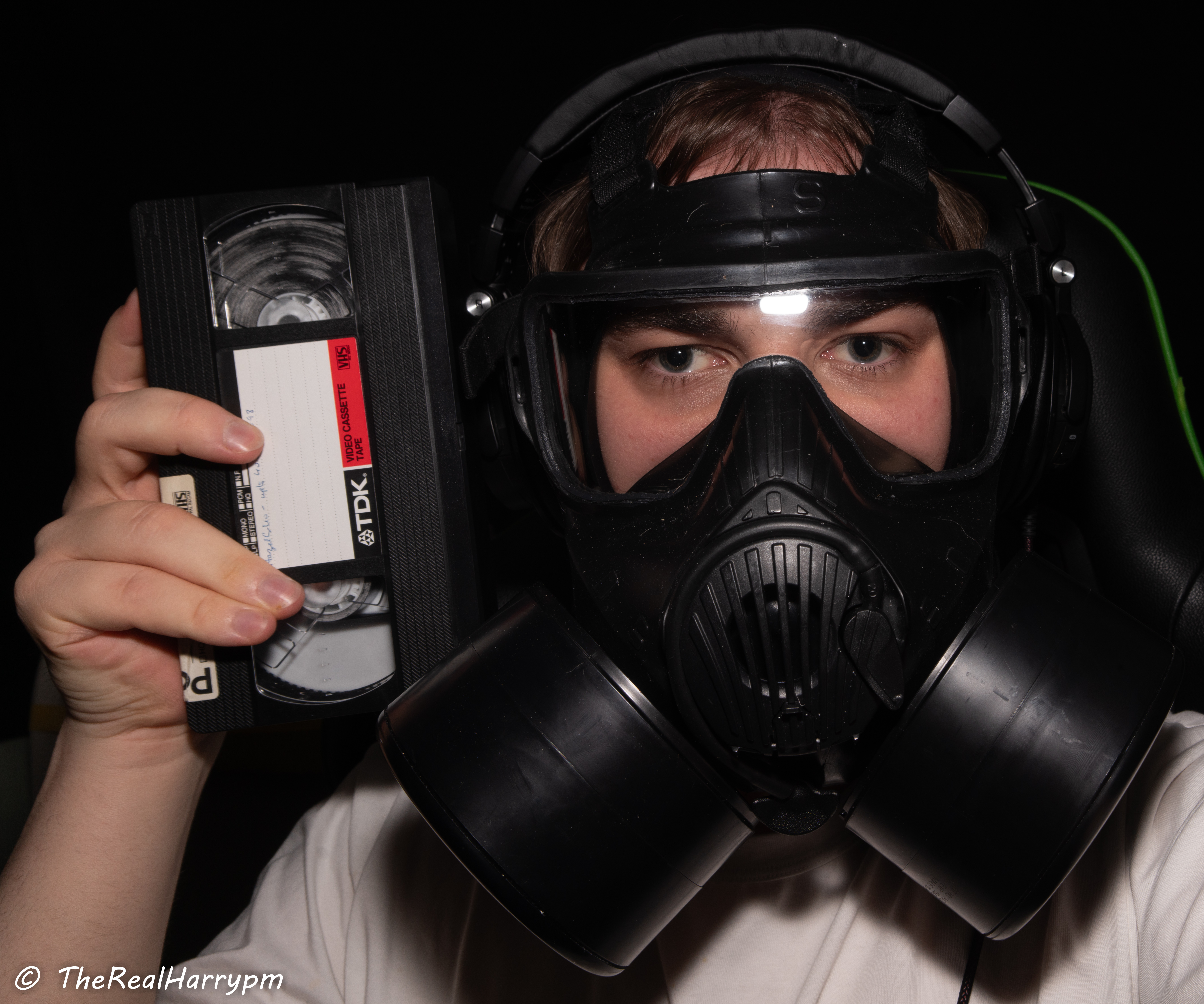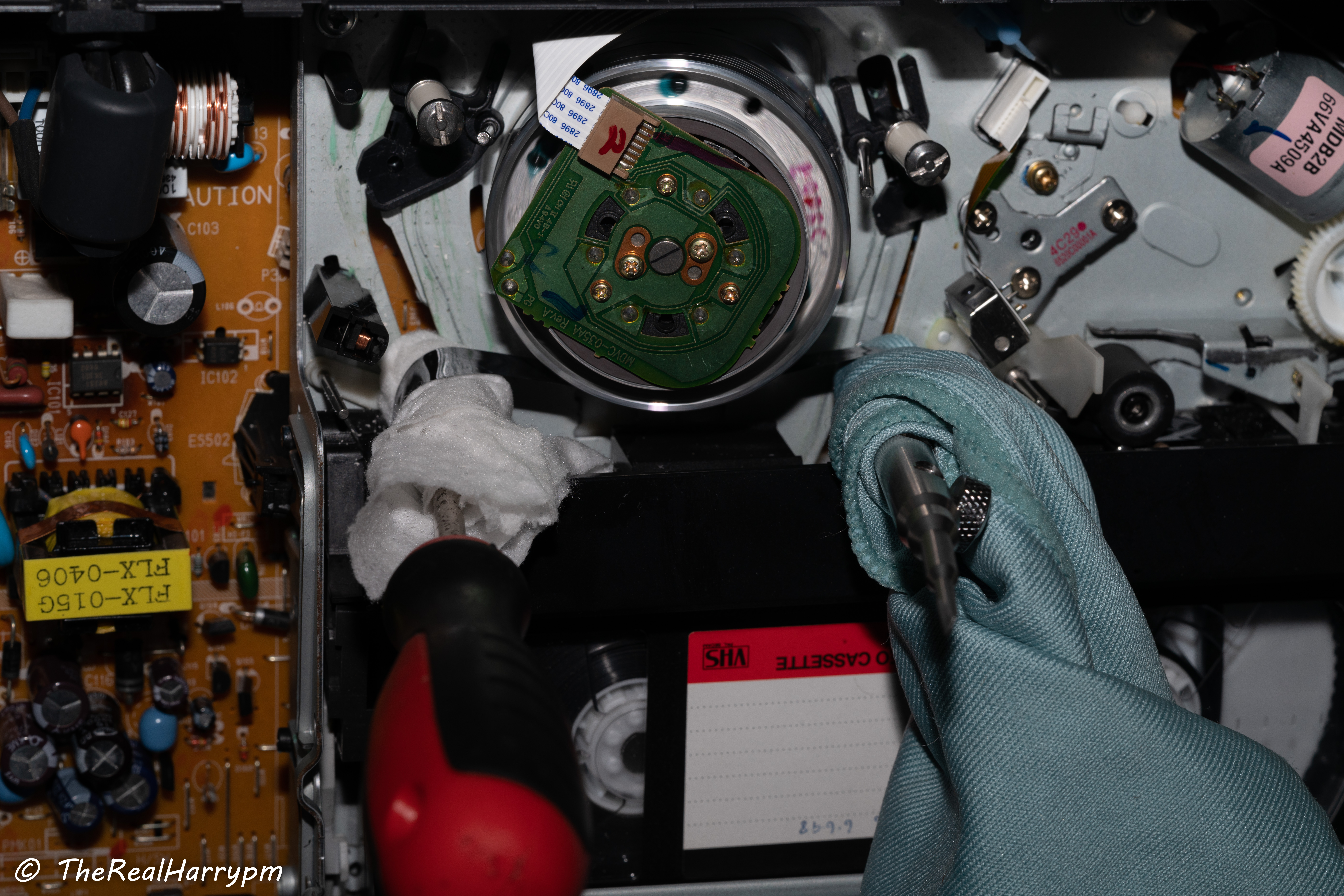Material Handling Guide
This guide has a clear set of standards for handling tape media and its digital counterparts.
Hello! Harry here so people ask what is the "Archivist" segment is in my nickname, well its materials handling (and my methodology of event coverage) but this document focuses on tape handling and the digital files generated after.
Now VHS/Beta tape is not as good as Video8/Hi8 and Betacam later gen tapes in terms of signal strength and magnetic reliability after a number of years pass shorter runtime thicker High Quality SVHS/HiFi tapes are better.
For long term storage tape should be vacuum packed and kept in an temp stable environment ideally 10c or 3-6m underground moisture free and cool stable temperature is key for archival of source media weather it be tape or celluloid film.
video master. the archival master, the exhibition copy or a viewing copy?
In consumer terms this is mostly first genaration copy, and second genaration copy, for chomercail tapes this is a viewing copy.
Masters for consumer media is normally (S)-VHS-C SP / (S)-VHS-C LP or a mix of the two this is uncommon for Video8 & Hi8 tapes.
This is a 2 term question, is there a locking or "do not write" tab broken or slid into the lock position.
When inserting an tape ensure proper in injection with 2 fingers at both sides and push until there is no longer tension.
Dont Breath! Its Toxic!

(Avon C50 with 2x conformal 40mm ABEK2P3 standard filters)
While in most cases mould is not a taken as a real threat and its like house spiders mostly wont kill you but some breeds can, tape mould however can be years developed and evolved so really it should not be in your lungs/eyes or any cuts/breaks in the skin.
Use VCR outside in a dry environment or inside an very well ventilated room without carpet ideally.
When using a VCR at speed to strip the mould off while most will end up in your disposable/washable microfiber or wetted wipes, it will still contaminate the surrounding air, now if your asthmatic or have any level of compromised immune system please heed these protective guidelines.
Minimum Protection level
Gloves Dawned (Dispose After Use)
Eye-Ware
Half-Face Respirator (Bayonet P3/ABEKP3 or FFP2 Disposable)
Recommended Protection level
Gloves Dawned (Dispose After Use)
Full-Face Respirator (40mm NATO)
40mm NATO ABEKP2P3 Rated Filter (Clean P3 layer After Use)
Keep Gloves On after handling contaminated material, if using disposable FFP2~FFP3 filters take them off with gloves then dispose of gloves taking them off inwards of each then bin or incinerate.
Remove gloves via overlapping into each-other inside out, then bin.
For respirators with re-usable filters, with alcohol soaked wipes clean the surface of mask and outside of the filter, remove mask from back straps.
remove gloves inwards of them-self's and then shower afterwards rinse and softly scrub the surface of mask with dish soap just alcohol will dry the rubbers
and then remove filter and wash mask fully with basic soap.
P100 = P3 filter (USA Naming vs NATO Universal)
P3 protection level is only considered "legal" with a full-face respirator, P3 R just means re-useable cleanse with Isopropanol or UV light and vacuum out debris from the external side these filters should only be destroyed when saturated unless you got the fitlers in bulk.
FFP3 Disposable masks are around 5-10 USD/GBP per mask.
40mm NATO thread P3 filters from SCOTT etc are 5-8USD new and if cleaned last years for normal dust and debris involved tasks.
For more info read the ISO/NSN/NIOSH standards here:
Cleaning the top of tapes is important most mould will build-up on the rim of a tape, rather then the surface of tapes.
Using a sacrificial VCR make 2 rods one with a wet-wipe with 99.9% IPA or de-ionised water and one with dry wipe or microfiber cloth run for 5-8 seconds at a time and swap repeat for both sides of the media.

Visual Inspection -> Mould No -> Hinge and Spooling Check -> Playback Check
Visual Inspection -> Mould Yes -> Decontamination Procedures -> Playback Check
Playback Checks Cleared -> RF signal level adjust and lock -> RF full tape test capture.
With mouldy tapes depending on the amount of damage control tracking could be effected and require manual tracking adjustment.
Full Captures Confirmed -> 99.9% Isopropanol wipe down and internal plastic condition check dust removal -> Vacuum Packed QR codes with text metadata and digital discovery information to be left internally and glued/taped on externally alongside standard tape information in plain text English.
Common on some tapes but mostly ones stored in a non-vacuum or wet envierment's with high moisture the bane of all tape archives.
are exposed to moisture worse case this means mould, most annoying case this means de-bonding of the layers or Sticky Tape Syndrome
This can be resolved via a process called tape baking
Tape baking is a method of evaporating moisture build-up which re-binds tapes layers separated by the water content
A equal applied heat via an convection oven this re-bonds layers and strips the water contents out of the caseate this can be done affordably via de-hydrating ovens this is done at 5460°C or 130°F140°F for 1~12 hours depending on condition these tapes should be vacuum packed afterwards if not being transferred immediately.
You can use an temperature controlled food dehydrator for around 50~250USD mark for this task.
Bake at 150°C for 2 hours
Pack each tape with 30g of silica in its own individual packaging.
Silica should be 2 hour baked before use if form a no-vacuum packed package.
Vacuum archival is used to store tapes isolated from moisture and sudden thermal events this provides an affordable yet very practical method for home and large scale cold archival in non-dry places like old warehouses or homes (unless you have a salt mine handy)
You can use any Vacuum Sealer for food for this task for under 30~50USD any ware pretty much.
Generally a 1~2 hour bake is recommended to de-hydrate the contents of the tapes.
Information to be included with tapes.
Plain text information must include
Tape Name
Runtime in 00:00:00:00 HH:MM:SS:FF, start time to end,
Recording Date YYYY.MM.DD
Recording/Dubbing VCR and or Camcorder if known.
If Media is SP/LP SVHS or VHS etc that should always be noted as its essential for multi format recorded tapes as VHS-Decode can not switch format on the fly as the playback speed modes are not digitally noted in logs.
These are the best examples I could find in 2022, but this list will be updated over time.
Simple Online QR Code Generator
CodeTwo - Windows Direct Download
QREncoder - Mac App Store
Android/IOS have dozens of apps but most first party apps now have readers built in.
Its a complex concept involving (C6H1O5)n & C3H8O
That's a joke, its paper and rubbing alcohol.
Simply cut a paper strip printer paper works fine, fold once, wet with alcohol, press on the drum lightly and hand rotate slowly don't go up and down and always gently pull away from drum once you have rotated for 10 seconds repeat until paper is clean.
Its recommended to first clean around the drum the whole cylinder, including its track then tape guides or rollers you can use swabs, don't ever use a cotton swab or Q-Tip on the video heads the fibres will tare them off they are fine however for linear audio heads, that's it really clean heads and lubricated mechanical tracks is all a happy VCR needs to ensure the best results, but be sure to clean before and after use to remove any contaminant.
- Lint Free Microfiber ("Ultra-Fine")
- Isopropanol 99.9% (IPA/Rubbing alcohol)
- Q-tip (Cotton Buds/Sticks)
- Wetwipes (De-ionised Water)
- Paper Towels
You will need a lint free wipes "Lint Free Nail Art Wipes" "PEC Pads" "Chamois Towels" these can be sourced from any online or odds and ends vender.
You need to make light pressure on the tape surface while moving at fast-forward speed.
The most effective way to clean is to use a VCR that has the tape non mechanically loaded in fast forward speed this allows 2 fingers or wooden sticks.
These will be mounted on audio heads, erase heads and the drum depending on if you so wish to make more delicate modifications or simply have 2 pencils or pens with off sets to clean both sides.
Example Pictures
RF Source --> FM RF Capture to File --> Checksums -->
On RF Capture runtime information, digital photos of cassette and notes of SP/LP if and or mixed tape
Capture 10bit ADC @ 40msps or 20msps -> Handling Metadata Runtime information and Attached Reference File ->
File inspection -> Indexing -> Duplication To HDD/LTO Tape/Cloud Services ->
TBC Generation & Metadata Creation -> Dropout Correction ->
Testing Protocol Revision 001 In Place as of 2022
1 Min Test capture Recommended.
RF -> Capture -> 4 point test 10sec each -> TBC Generation -> Metadata Export -> Dropout Inspection -> ld-analyse -> Signal To Noise and Quality Checking -> Dropout Correction Test -> Gen Chroma Export Test
MKV - FFV1 10bit 4:2:2 70-100mbps interlaced file
- FAQ - Frequently Asked Questions
- Diagram Breakdowns
- Visual-Comparisons
- VCR Reports / RF Tap Examples
- Download & Contribute Data
- Speed Testing
- Visual VBI Data Guide
- Closed Captioning
- Teletext
- WSS Wide - Screen Signalling
- VITC Timecode
- VITS Signals
- XDS Data (PBS)
- Video ID IEC 61880
- Vapoursynth TBC Median Stacking Guide
- Ruxpin-Decode & TV Teddy Tapes
- Tony's GNU Radio For Dummies Guide
- Tony's GNU Radio Scripts
- DomesDay Duplicator Utilities
- ld-decode Utilities